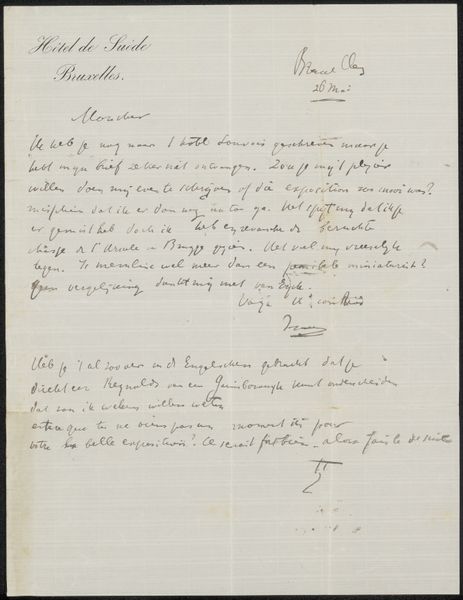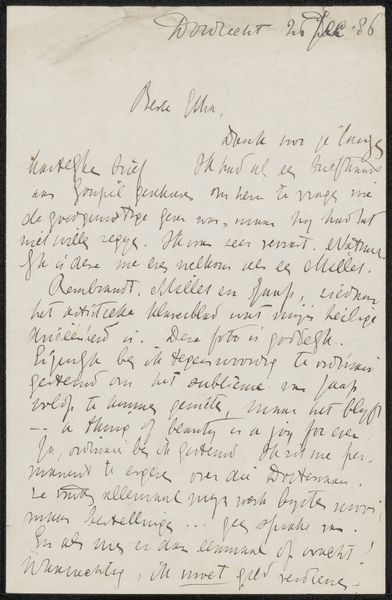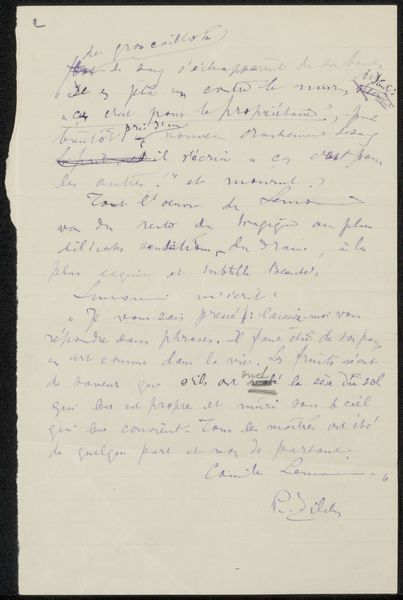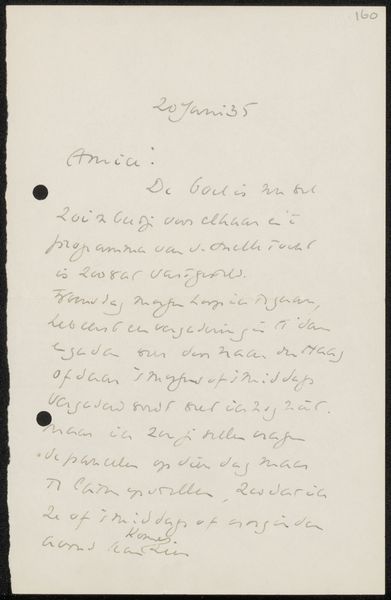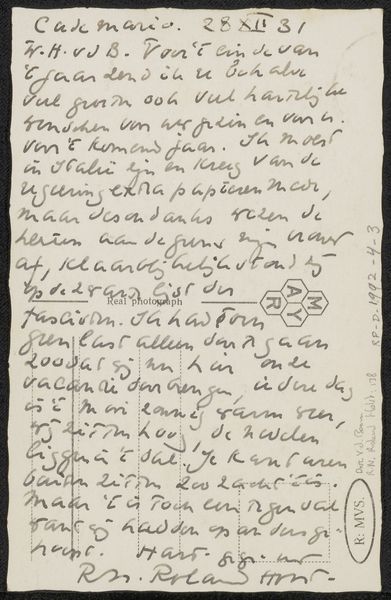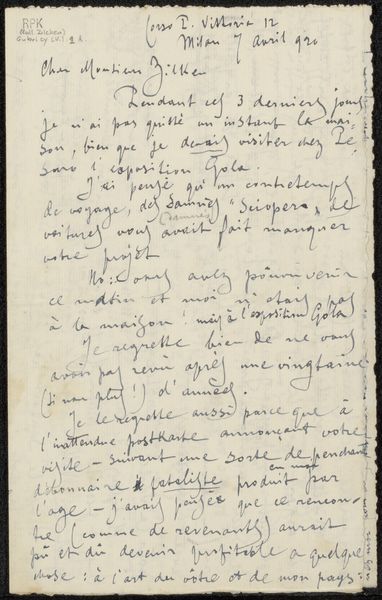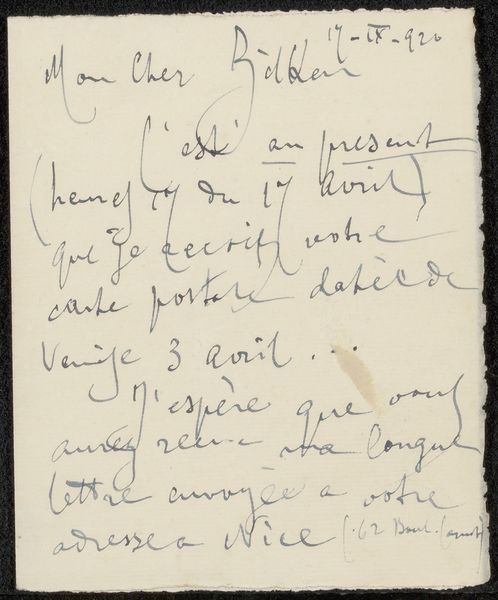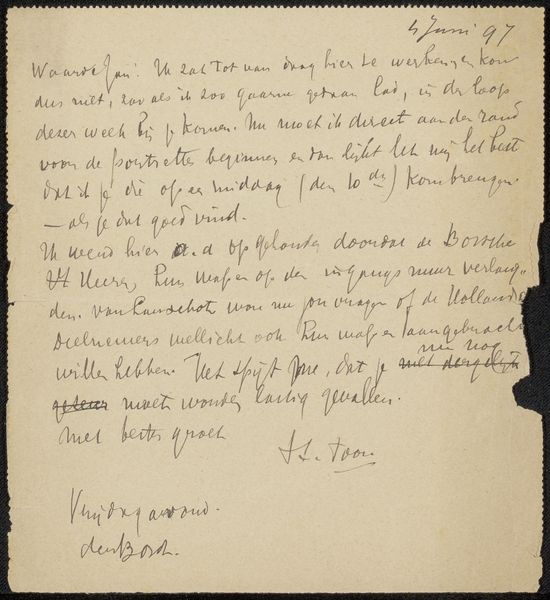
drawing, paper, ink, pen
#
drawing
#
dutch-golden-age
#
paper
#
ink
#
pen
Copyright: Rijks Museum: Open Domain
Curator: Here we have “Brief aan Jan Veth” or “Letter to Jan Veth” created by Isaac Israels between 1875 and 1925. It's ink on paper. Editor: The flow of this script–pardon, I mean writing– feels feverish, like a hurried confessional. Curator: Precisely, the immediacy captures something of daily exchange. Look closer. Notice how the physical qualities of the ink and paper influence the work. The type of paper used – probably readily available, inexpensive – suggests the material constraints under which Israels worked. Editor: There’s a vulnerability there. You can feel him grappling with thoughts and feelings in real-time as he’s writing. It looks as if he scratched out some of his earlier edits. It is interesting to think about letters in contrast to our immediate form of electronic communication nowadays. Curator: Right. Israels likely considered his materials thoughtfully, valuing their capacity to carry his thoughts and intentions efficiently, if not preciously. Paper in this time had economic value. The choice reflects more pragmatic than purely aesthetic considerations. Editor: Still, the visual rhythm of the handwriting itself—the loops, the pressure, the occasional blot— speaks to a different kind of artistic intentionality. It blurs that distinction between functional document and aesthetic object, wouldn’t you agree? It also offers us a tiny view into his creative process as an artist. Curator: It definitely challenges conventions and celebrates everyday material as a worthy conduit of artistic expression, inviting us to re-evaluate the perceived hierarchy between fine art and the overlooked crafts of writing and penmanship. Editor: Exactly, the letter feels imbued with Israels' immediate thoughts. Thanks for elucidating some new insight, it will forever affect my interpretation. Curator: Likewise. It’s rewarding to analyze the everyday markers we overlook while viewing artwork and exhibitions.
Comments
No comments
Be the first to comment and join the conversation on the ultimate creative platform.
